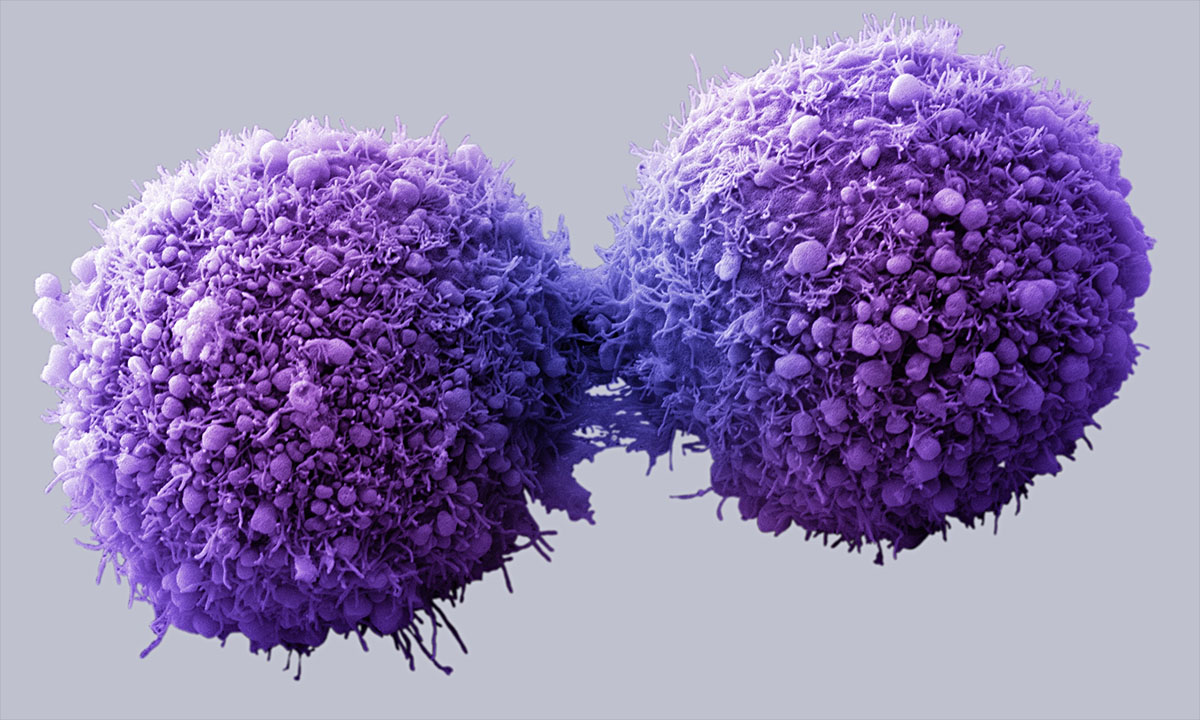a new, smarter weapon against cancer cells?

They sneak in, find and neutralize their target with a complex biological weapon, then sneak out before they’re even detected. No, they’re not a special forces squad from a spy novel. They’re actually 70 nanometer particles which could become one of the most important weapons in fighting cancers if their promise is proven in large and well designed studies, and have potential applications in the realm of gene therapy, something that’s still more science fiction than science fact.
The particles themselves are polymers and a protein designed to bind to receptors on the surfaces of cancer cells and deliver a payload of RNA which effectively silences a key gene in tumor growth, co-opting strategies used by viruses to infect cells and make more copies of themselves for altering gene expressions in target cells. But they’re not quite ready for use yet and have some limitations…
One of the most important things to note is that these particles don’t actively kill cancer cells despite reports to the contrary by a number of tech blogs. Instead, what they do is introduce a strip of ribonucleic acid known as small-interfering RNA, or of you’re a fan of biological acronyms, siRNA. The goal is to shut down the day to day process of encoding the instructions of the target gene RRM2 into a protein by attaching the siRNA to a cell’s messenger RNA, or mRNA, used to transcribe the instructions from DNA and deliver them to the ribosome in which the different amino acids are strung together into proteins.
The siRNA cuts off the mRNA’s instructions at specific spots and the gene being decoded is ignored in the ribosomes. Without the protein designated by the RRM2 gene, cancer cells have trouble multiplying and tumor growth is severely affected. While the tumors already there won’t be killed in the process, the siRNA delivering particles should give oncologists more time to deal with the cancer by more traditional means like surgery and chemotherapy, perhaps even extending the impact of treatments to later stage cancers which could be virtually shut down by these polymers.
Theoretically, one could use the same method to shut down any gene you want to target and someone rather bold may even want to try to apply it to developing fetuses to counter the future effects of genetic diseases that could be found by standard DNA tests. However, the actual efficacy of this technique is still a somewhat open question. Large scale biological systems are very fluid and what one would logically expect to work is always subject to the myriad of unique difference from one organism to the next. This is why different people can have very different effects to the same medication and many drug trials end in disappointment.
So far, the polymers delivering anti-RRM2 siRNA has been tested in just 15 melanoma patients of which only three volunteered to submit a sample via biopsy. Nevertheless, the initial findings seem encouraging. The mRNA extracted from a number of cancer cells had the exact length and sequences the researchers expected to find if the siRNA did its job. Likewise, one of the samples had lower levels of the protein encoded by RRM2 at the end of the study than it did before. All this adds up to a very good proof of concept, albeit in a very limited sample.
However, it’s not yet clear how many of these particles would have to be injected to halt the growth of an entire tumor and whether the required doses would be safe. They should have no side-effects since they’re all built to attack only one, specific gene that occurs in certain cells, and find their targets by passively floating through the bloodstream until they spot a blood vessel supplying blood to a tumor and hitch a ride to the collections of target cells without interacting with anything else in the body. Even if some of the polymers attach to the wrong set of proteins on a healthy cell, their siRNA payload shouldn’t be able to do anything harmful since the gene’s expression appears to be mostly associated with cancers.
Or at least that’s how things appear so far. There’s really no telling how well patients would react to large doses of these particles until there’s a standard clinical double-blind study involving significant patient populations. Additionally, the studied tumors were taken from melanoma patients and because cancers are actually a family of diseases which cause runaway cell division, the polymers in question may need to be customized for many different cancer types and the studies repeated for the various disorders. Finally, we should note that not all cancers form tumors so the polymers would also need to be modified to effectively disrupt the behavior of cancerous cells in these cancer varieties.
See: Davis, M., et. al., (2010). Evidence of RNAi in humans from systemically administered siRNA via targeted nanoparticles Nature DOI: 10.1038/nature08956





